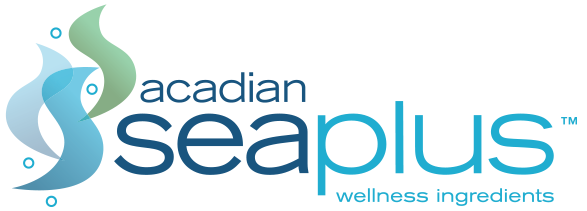What journey did your food make to reach your plate? For most meals, it’s a mystery with few clues about how each ingredient was grown, cultivated, or harvested. However, a growing number of companies are taking eco-friendliness to heart—and sharing the stories of better food production with their customers.
We’re glad more businesses are joining us in this practice. Since the early days, Acadian SeaPlus™ has made sustainability a central part of our approach, taking care of the natural resources we use to promote a more eco-conscious future.
What does that look like in practice? We’re glad you asked. Here are the sustainable seaweed harvesting practices we use to gather our wild-harvested species, foster their regrowth, monitor their ecosystem, and ensure they are available for future generations.
Smart Harvesting
Let’s start with harvesting. Seaweed is a resilient natural resource, but it still needs proper handling during the harvest if it’s going to last for future generations. That is why the harvesters who work with Acadian SeaPlus™ take painstaking steps to preserve the holdfast and set the stage for robust regrowth.
Our careful collection of seaweed starts with our tools. Our harvesters use sickles, serrated knives, specialized cutter-rakes and mechanical equipment that are selected because they offer a less destructive way to separate the seaweed from its holdfast and the underlying substrate. Think of the process as pruning, where we leave enough of the frond for the seaweed to regenerate.
We leave different amounts in the wild depending on the type of seaweed. For example, our harvesters are trained to always preserve 5 cm to 20 cm of Ascophyllum nodosum, allowing the frond to resurge from the holdfast. When seaweed is consciously reaped, we can supply our customers with a quality product and the ecosystem is minimally impacted.
Resource Management
More than carefully cutting individual seaweed fronds, our business and coastal ecosystems rely on holistic management. That means keeping an eye on the overall seaweed population to encourage the rejuvenation of this renewable marine resource. Only by closely monitoring the health of our harvesting sites can we regularly adjust our practices and collection frequency to promote abundant seaweed growth.
Monitoring the seaweed stock is a full-time job. We employ resource scientists and resource managers to audit each stretch of intertidal water where we harvest, collecting samples and studying biomass with high-resolution drone and satellite imagery. Our team even observes and tracks how algal biomass or seaweed canopy structure can impact invertebrates, fish and other marine fauna.
Through our work, we know the specific conditions of our harvesting sites and can make smart decisions to support their regrowth. Is a specific spot taking extra time to bounce back? We can suspend the harvest for longer. Are different techniques speeding up the return of biomass or increasing the height of the seaweed canopy? We can implement those strategies across plots and expand yields. We always respond to conditions as we find them.
Our resource management team also makes collaboration a priority. If a holdfast is removed, we record that occurrence during inspections in the boat, on dry docks and at our production facilities. We also partner with local research institutions, universities and government agencies to assess and validate the harvest’s potential impact on seaweed and local ecosystems.
Maintaining Sustainable Seaweed Harvesting
As with everything, sustainable best practices are always changing and evolving. Though we’ve taken action to preserve this incredible natural resource today, we’re always learning and exploring new ways to improve sustainability in our coastal waters.
When our people and processes come together, we can continue to deliver seaweed products that give our customers the nutrients and bioactive ingredients they crave.
Want to learn about the quality products produced by our sustainable seaweed harvesting process? Read more here about our seaweed products.
Learn about our products
Related Articles
4 Eco Friendly Stocking Stuffers Your Friends & Family Will Love
Can a Seaweed Plastic Alternative Save the World? A London Startup Says Yes
